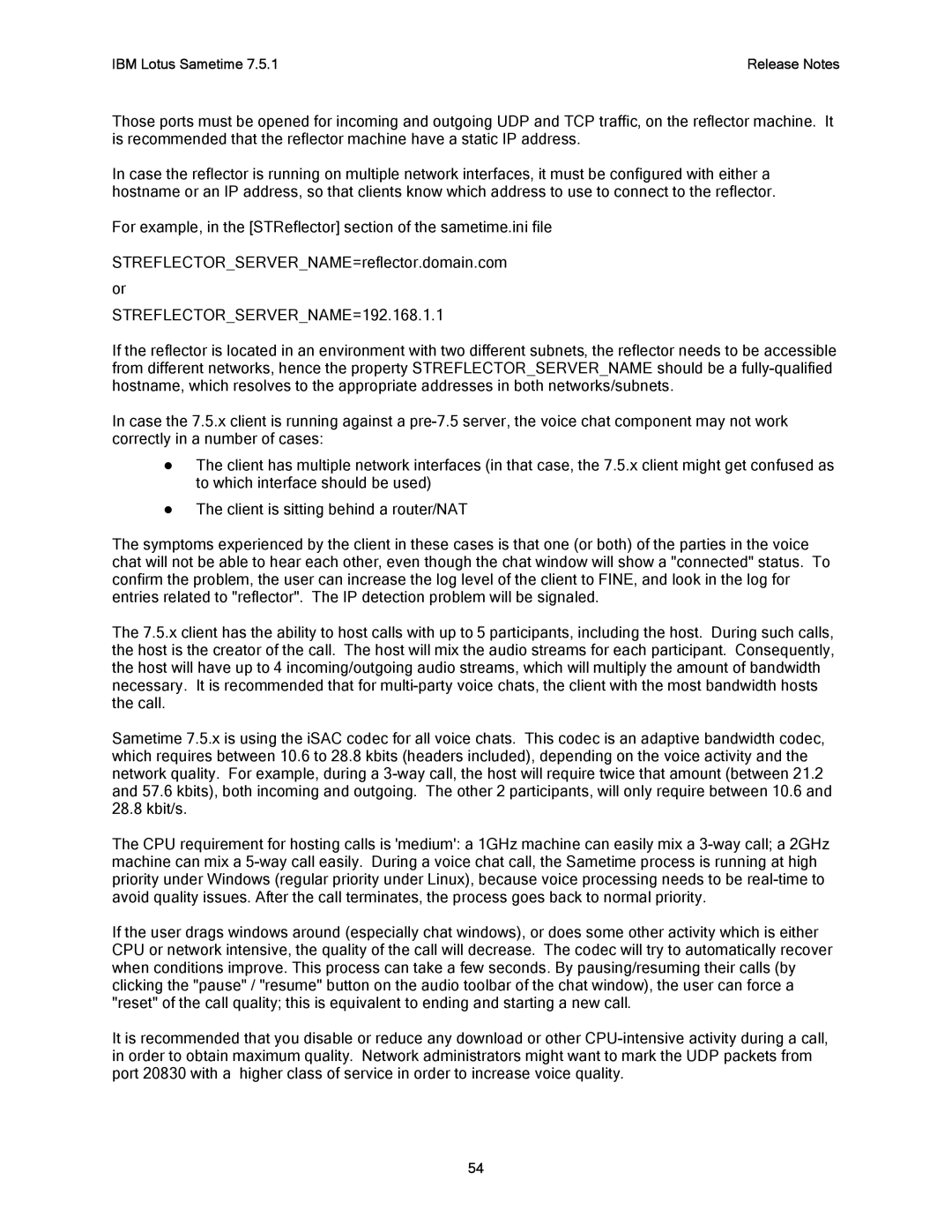IBM Lotus Sametime 7.5.1 | Release Notes |
Those ports must be opened for incoming and outgoing UDP and TCP traffic, on the reflector machine. It is recommended that the reflector machine have a static IP address.
In case the reflector is running on multiple network interfaces, it must be configured with either a hostname or an IP address, so that clients know which address to use to connect to the reflector.
For example, in the [STReflector] section of the sametime.ini file
STREFLECTOR_SERVER_NAME=reflector.domain.com or STREFLECTOR_SERVER_NAME=192.168.1.1
If the reflector is located in an environment with two different subnets, the reflector needs to be accessible from different networks, hence the property STREFLECTOR_SERVER_NAME should be a
In case the 7.5.x client is running against a
zThe client has multiple network interfaces (in that case, the 7.5.x client might get confused as to which interface should be used)
zThe client is sitting behind a router/NAT
The symptoms experienced by the client in these cases is that one (or both) of the parties in the voice chat will not be able to hear each other, even though the chat window will show a "connected" status. To confirm the problem, the user can increase the log level of the client to FINE, and look in the log for entries related to "reflector". The IP detection problem will be signaled.
The 7.5.x client has the ability to host calls with up to 5 participants, including the host. During such calls, the host is the creator of the call. The host will mix the audio streams for each participant. Consequently, the host will have up to 4 incoming/outgoing audio streams, which will multiply the amount of bandwidth necessary. It is recommended that for
Sametime 7.5.x is using the iSAC codec for all voice chats. This codec is an adaptive bandwidth codec, which requires between 10.6 to 28.8 kbits (headers included), depending on the voice activity and the network quality. For example, during a
The CPU requirement for hosting calls is 'medium': a 1GHz machine can easily mix a
If the user drags windows around (especially chat windows), or does some other activity which is either CPU or network intensive, the quality of the call will decrease. The codec will try to automatically recover when conditions improve. This process can take a few seconds. By pausing/resuming their calls (by clicking the "pause" / "resume" button on the audio toolbar of the chat window), the user can force a "reset" of the call quality; this is equivalent to ending and starting a new call.
It is recommended that you disable or reduce any download or other
54
